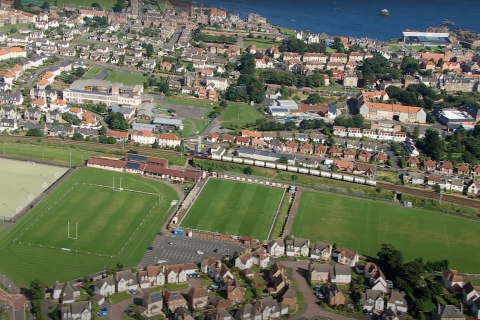Dutch-German railway at Venlo made available for longer trains
The first freight trains with a length of 740 metres can pass the Dutch-German border crossing at Venlo by 2020. That is the expectation of Dimitri Kruik, Director of Capacity Management at ProRail, the Dutch infrastructure manager. His conclusion is based on a study carried out by ProRail into driving longer freight trains on the Dutch railway network. This study will be published later this year.
ProRail has the objective of increasing freight transport by rail from 42 million tonnes in 2016 to more than 60 million tonnes in 2030. According to Kruik, capacity and availability of the rail network have the highest priority to achieve this. Facilitating longer freight trains on the network is one of the measures that should stimulate this. “If a carrier can transport a number of additional containers by train, the costs, including the user fee, will remain approximately the same while it will yield more. That is why capacity and availability are just as important as the track access charge.”
Available train length
Maasvlakte West, which is part of the port of Rotterdam, is currently already suitable for running 740-metres trains. According to Kruik, in order to make other places in the Dutch rail network accessible for long trains, the waiting tracks must be tackled. “If a long freight train can continue to run without delay, then this is not a problem. But if, for example, passenger trains are also passing, it will become more difficult. In that case there comes a point that a freight train must stop or be sidelined. And for that, the waiting tracks must be long enough.”
“In some places we are already changing the waiting tracks. And when developing new infrastructure we immediately make it suitable for 740 metres trains. In the study that ProRail has carried out, we provide advice on which places are most suitable for long waiting tracks. “It mentions, among other things, the port yards, Roosendaal and Venlo.” According to Kruik, it is also important to invest in the northern route to Bad Bentheim.
Increase capacity
Kruik points out that in order to structurally increase capacity, various investment projects have been launched in the Netherlands over the last few years. The Theemsweg Route is currently constructed in the port of Rotterdam, which must offer a solution to the bottleneck at the Caland Bridge. The new route runs over an elevated railway viaduct. The track will have two arched bridges and will reconnect to the existing rail track at the A15 level. “This new piece of track will considerably reduce the number of disruptions.”
The Havenspoorlijn (port line – Rotterdam) is also being upgraded this year. “This line must be spic and span. The track that enters the port is crucial because there are no possibilities for diversions. The same applies, for example, to the Zeeland line between Vlissingen and Roosendaal.”
ProRail is working with the sector to improve efficiency in the ports. In cooperation with the port authority and carriers, shippers and terminals, the rail manager is working on shortening the waiting time. This is done, among other things, by exchanging data at a detailed level between terminals, traffic control and carriers. Such as when they can enter a terminal and when they can leave. Traffic control has a crucial role in this.





